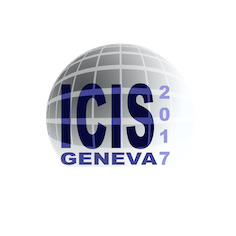Speaker
Description
Compact ECR plasma device was built in the Atomki ECR Laboratory called ECR Table Plasma Generator (TPG). It consists of a large plasma chamber (ID=10 cm, L=40 cm) and of a thin NdFeB hexapole magnet with vacuum and gas dosing systems. For microwave coupling low power TWTA is applied, operating in the 6-18 GHz frequency range. There is no axial magnetic trapping and there is no ion extraction. The relatively big plasma chamber makes it an ideal device to install Langmuir-probes into it easily while the plasma is still observable with eyes or cameras.
Four cylindrical Langmuir-probes parallel to the plasma chamber axis are installed to the rotatable endplate of the TPG’s plasma chamber. This experimental setup allows to measure the azimuthal and radial dependence of several plasma parameters at fix axial position. Plasma parameters like floating potential, plasma potential, electron temperature, electron density, electron energy distribution function, effective temperature are calculated from the voltage-current characteristic of the probes. The effect of TPG settings (microwave power, gas pressure) to the plasma parameters is investigated.
Details of the experimental setup, data acquisition system, data evaluation and the plasma parameter dependences will be presented.




